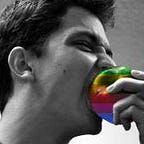Snapchat and the Art of Upstreaming
Thoughts on Snapchat’s move into photo management
For many people, myself included, Snapchat has become their primary camera app. The decorations, captions, filters, lenses, drawing etc are incredibly powerful tools for storytelling and capturing a moment. And it’s only getting better.
But yesterday’s new product launch moves Snapchat beyond a camera experience into a full blown photo management product. You can now save your own photos and stories inside Snapchat to browse later.
Strategically this is a bold move that will help Snapchat further own the camera and completely cutoff Facebook/Instagram. When Snapchat owns entire camera and photo experience, no one else gets those photos. It’s basically the same concept New Yorkers call upstreaming:
I’m incredibly bullish on Snapchat as a company and this new move in particular. I think we’ll look back in a few years and see that “camera app” usage was leapfrogged just like SMS.
I believe Snapchat more than anyone else today understands the intricacies of how users think about photos and their mobile devices—and a lot lines up with what I’ve seen in Timehop user testing sessions and my own field observations.
About a month ago, I tweeted this:
This continues to be true. Many users are out of space on their phone and unable to take more photos without removing some first. They’re too frugal to pay $0.99/month to let iCloud solve the problem.
Screens are dimmed to the lowest brightness to preserve battery life. I cannot tell you how many times I’ve had to ask people in our user testing sessions to turn up their brightness so I can actually see.
The glass phone screens are often shattered and barely viewable, with clear packaging tape holding it together. AssistiveTouch (the accessibility floating circle thing) is turned on because their home button has stopped working and they don’t want to buy a new phone before their contract covers it.
So as much as the tech press continues to hype up rumors of the iPhone 7’s improved camera and double the storage, this is all missing the point. It should just work. Users shouldn’t have to make a choice between 64GB and 128GB devices or even ask what a bite of giga is. The fact that we’re even talking about storage capacity in 2016 is ridiculous. Users just want something that works.
And that’s what Snapchat gets that nobody else does. You’re making a product for humans, not scientists. The average user doesn’t care about full resolution 6MB images saved on their camera roll backed up to Dropbox/Google Photos etc. Camera rolls are the new cutting room floor. The best photos already found their way to Instagram months ago, leaving behind a mess of duplicates, blurry outtakes, and screenshots.
Snapchat is perfectly imperfect. So what if the photos aren’t the highest quality? So what if it doesn’t cater to landscape? So what if text captions are plastered directly on top of the photo itself?
This is Christensen’s ‘low-end disruption” at its best. The best camera app isn’t the highest quality photo resolution. It’s something that “just works” — it helps you capture the story and it does it fast. And Snapchat is building just that — a disruptive photo management app for the whole world that “just works.”
